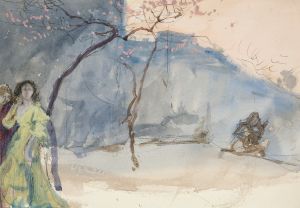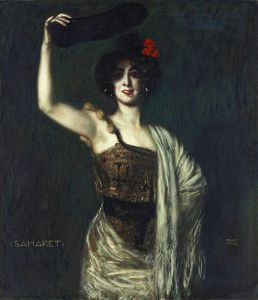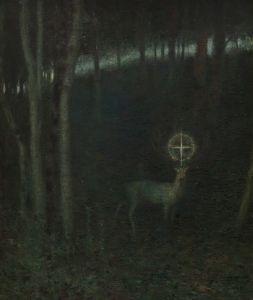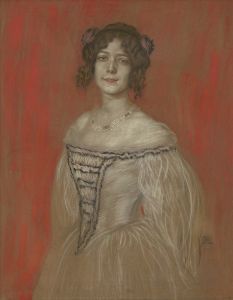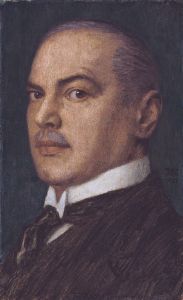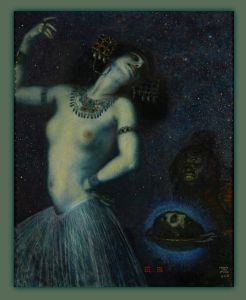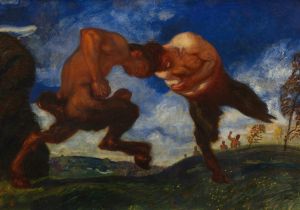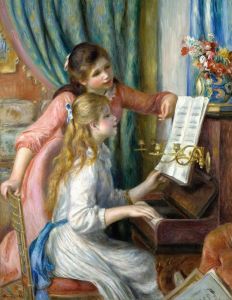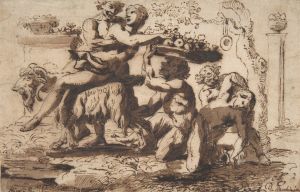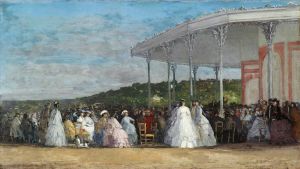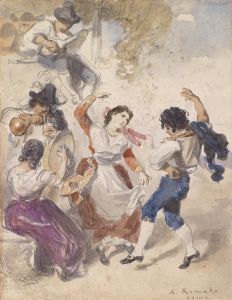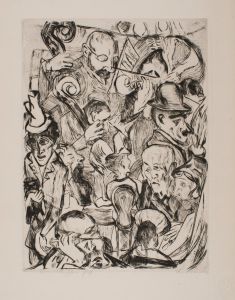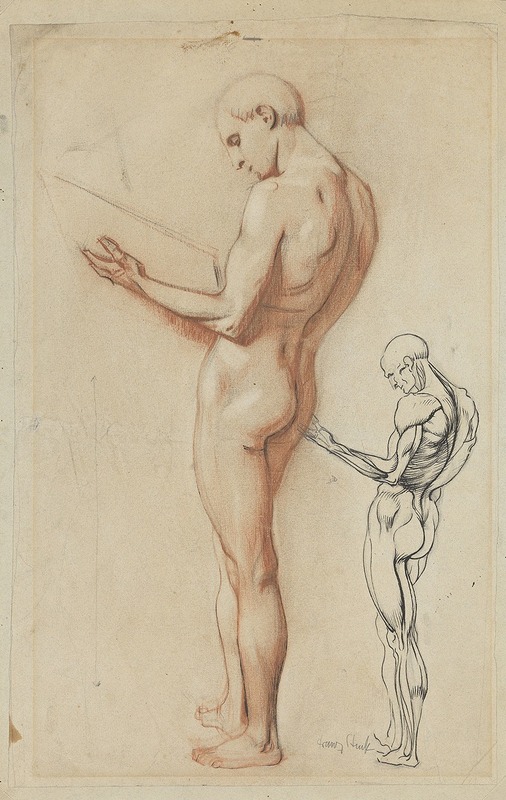
Studie zum ‘Orpheus’
A hand-painted replica of Franz von Stuck’s masterpiece Studie zum ‘Orpheus’, meticulously crafted by professional artists to capture the true essence of the original. Each piece is created with museum-quality canvas and rare mineral pigments, carefully painted by experienced artists with delicate brushstrokes and rich, layered colors to perfectly recreate the texture of the original artwork. Unlike machine-printed reproductions, this hand-painted version brings the painting to life, infused with the artist’s emotions and skill in every stroke. Whether for personal collection or home decoration, it instantly elevates the artistic atmosphere of any space.
Franz von Stuck was a prominent German painter, sculptor, and architect associated with the Symbolist movement. Born on February 23, 1863, in Tettenweis, Bavaria, Stuck became one of the founding members of the Munich Secession, an influential group of artists who sought to break away from traditional academic art. His work is characterized by a fascination with mythological and allegorical themes, often exploring the darker aspects of human nature.
"Studie zum ‘Orpheus’" is one of Stuck's works that reflects his interest in classical mythology. Orpheus, a legendary figure from Greek mythology, was a musician and poet whose music could charm all living things and even inanimate objects. The myth of Orpheus has been a popular subject in art and literature for centuries, symbolizing the power of art and music to transcend the ordinary and touch the divine.
In Stuck's study of Orpheus, he captures the essence of the mythological character through his distinctive Symbolist style. Stuck's approach often involved a dramatic use of light and shadow, as well as a focus on the emotional and psychological depth of his subjects. While specific details about the composition and style of "Studie zum ‘Orpheus’" are limited, it can be inferred that Stuck's portrayal likely emphasizes the ethereal and otherworldly qualities associated with Orpheus.
Stuck's work often included a blend of realism and fantasy, creating a dreamlike atmosphere that invites viewers to explore the deeper meanings behind the imagery. His paintings frequently feature strong contrasts and a rich, dark palette, which contribute to the mysterious and sometimes ominous mood of his pieces. This approach aligns with the Symbolist movement's aim to express ideas and emotions through symbolic and metaphorical representations.
Throughout his career, Franz von Stuck received numerous accolades for his contributions to the art world. He was appointed a professor at the Academy of Fine Arts in Munich, where he influenced a generation of artists, including the renowned painter Wassily Kandinsky. Stuck's impact on the art world extended beyond his own creations, as he played a significant role in shaping the direction of modern art in Germany.
"Studie zum ‘Orpheus’" is a testament to Stuck's ability to reinterpret classical themes through a modern lens, blending traditional mythology with the innovative techniques of the Symbolist movement. His work continues to be celebrated for its technical mastery and its ability to evoke complex emotions and ideas.
While specific information about "Studie zum ‘Orpheus’" may be limited, Franz von Stuck's broader body of work provides valuable insight into his artistic vision and the cultural context in which he created. His exploration of mythological themes remains a significant aspect of his legacy, reflecting the enduring power of these ancient stories to inspire and captivate audiences across generations.





